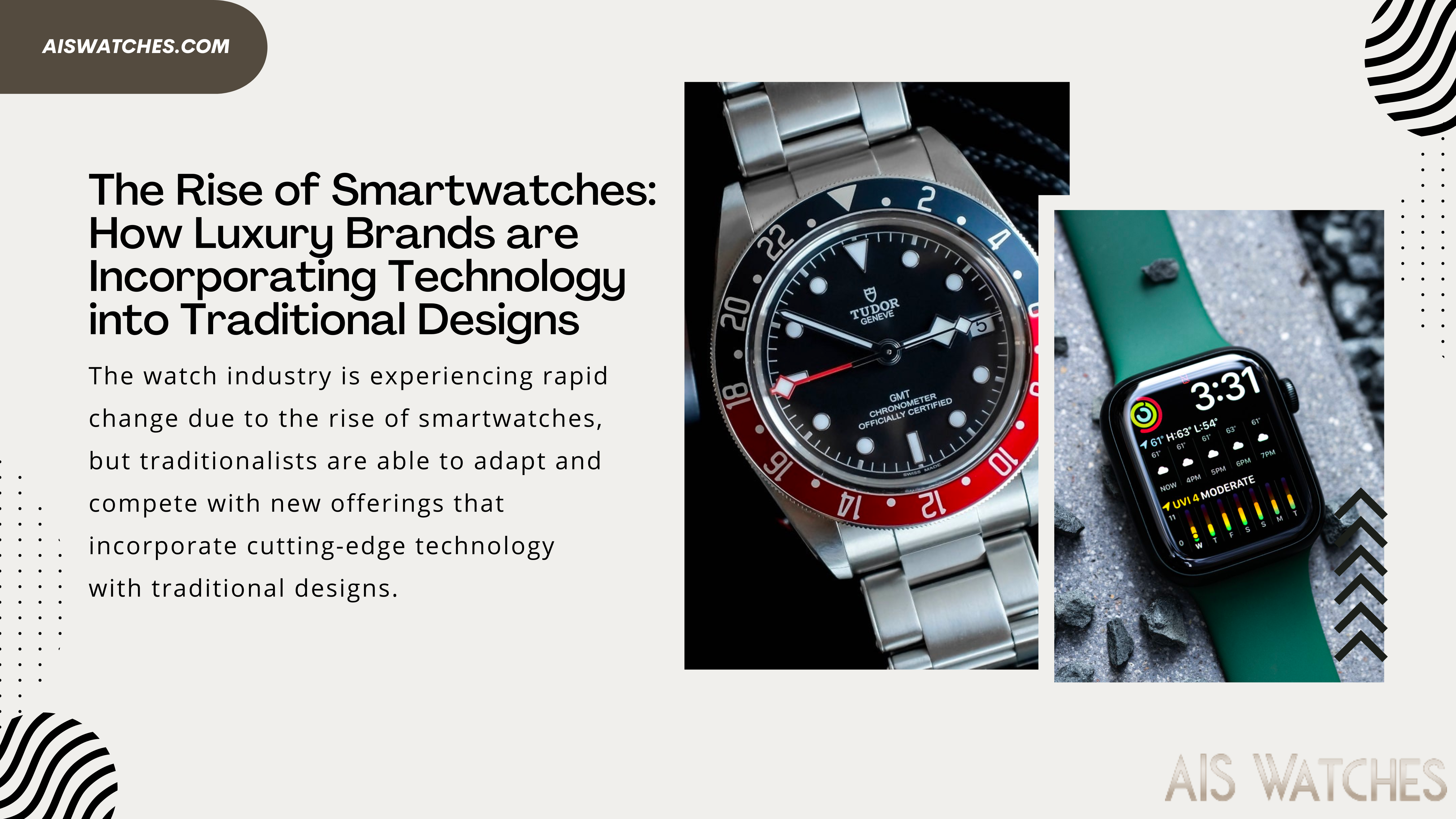The Rise of Smartwatches: How Luxury Brands are Incorporating Technology into Traditional Designs
Posted by AIS Watches on Apr 20th 2023
The watch industry is experiencing rapid change due to the rise of smartwatches, but traditionalists are able to adapt and compete with new offerings that incorporate cutting-edge technology with traditional designs.
Watches are more than just timepieces. They are symbols of status and power.
Watches are a sign of status, power and wealth. Whether you are wearing a Rolex or an Apple Watch, they can tell others that you have the money to buy whatever brand name watch you want. Watches also serve as a way for people to express their personality and personal style through the type of watch they wear.
In addition to being an accessory that shows off your wealth and status, watches have also become pieces of art in themselves. The designs on these timepieces may be simple at first glance but there is actually much thought put into them before they get produced into actual products for sale in stores worldwide (or online).

The Rise of Smartwatches
Smartwatches are more than just timepieces. They're symbols of status and power that can be worn by anyone, from CEOs to college students. As a new challenger to traditional luxury watches, smartwatches are affordable and accessible to a wider audience.
This shift in perception has led many brands to incorporate technology into their designs--and it's working! Smartwatches have become one of the hottest accessories in fashion right now; they're popping up everywhere from runways at New York Fashion Week to Instagram feeds around the world.
Traditional Luxury Watches Have a New Challenger
Smartwatches are a new product category, and the traditional watchmakers have been slow to adapt. But luxury brands are beginning to incorporate technology into their designs, competing with smartwatches on both a technical level (in terms of functionality) and an aesthetic one (in terms of style). The rise of smartwatches represents an opportunity for these brands to increase revenue streams by offering consumers something they don't already have--and they're taking advantage of it.
European Watchmakers Look to the Future
The luxury watch industry is experiencing rapid change due to the rise of smartwatches. Traditionalists are able to adapt and compete with new offerings that incorporate cutting-edge technology with traditional designs, but they must also look ahead to what consumers will want in the future.
The future of luxury watches will be determined by the next generation of consumers who grew up with smartphones and other advanced technology--these are people who have never known life without an internet connection or video streaming services at their fingertips. They don't need watches that tell time; they have their phones for that! Instead, these consumers want something more: an accessory that can enhance their lives in some way beyond telling them what time it is (and maybe even how much money they have left in their bank account).
The luxury watch industry is experiencing rapid change due to the rise of smartwatches, but traditionalists are able to adapt and compete with new offerings that incorporate cutting-edge technology with traditional designs.
The smartwatch market has grown rapidly since its introduction in 2014. The first Apple Watch sold over 12 million units in two years and established itself as one of the most popular brands on the market. While this number pales in comparison to other electronic devices like smartphones or computers, it shows that consumers have embraced these new devices--especially those interested in fashion accessories like watches or jewelry (which represent about half of all sales).
The luxury watch industry is experiencing rapid change due to the rise of smartwatches, but traditionalists are able to adapt and compete with new offerings that incorporate cutting-edge technology with traditional designs. This article explores how European watchmakers are looking to the future as they seek out new ways to stay relevant in a rapidly changing market.
 Menu
Menu




